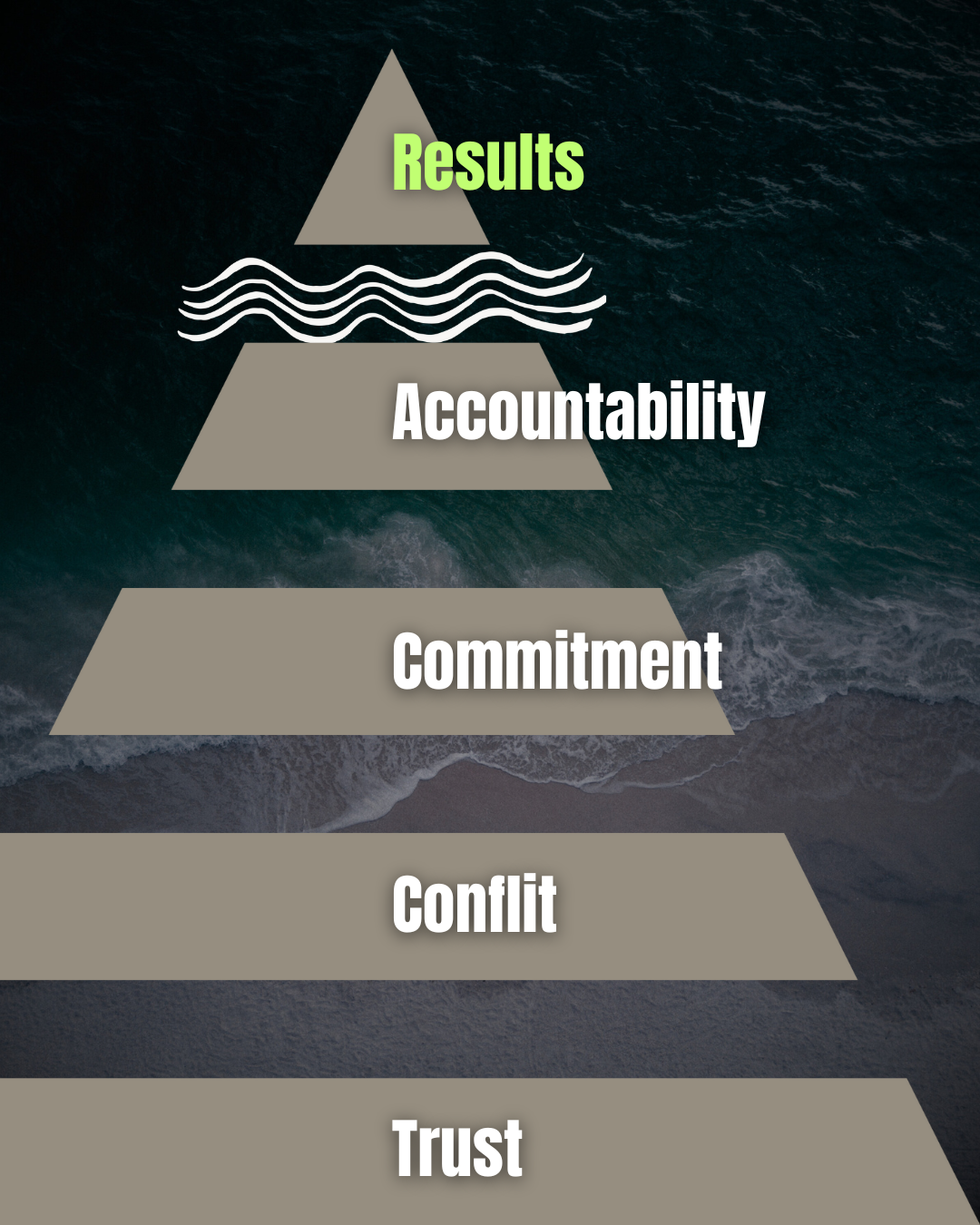
Team Dynamics Tips
Your results are just the beginning.
Each category in the Team Dynamics chart reflects a critical dynamic in how your team works together — especially under pressure. On this page, you’ll find a breakdown of what each category means and how to begin strengthening it.
What to do with your chart:
Notice which areas are lowest — these may be your leverage points.
Look for imbalances. High commitment but low trust? That can create burnout.
Use this page to explore practical ways to address weak spots — starting from the bottom up.
The Five Dysfunctions of a Team
High-performing teams don’t just happen — they’re built on trust, healthy conflict, and shared leadership. The model behind your chart comes from Patrick Lencioni’s The Five Dysfunctions of a Team, a widely used framework for understanding and improving team dynamics.
At its core is a simple truth:
What’s happening at the top (results) depends on what’s happening below (accountability, commitment, conflict and trust).
Here’s a quick overview of the five layers.
Trust & psychological safety
If there is trust, there is freedom to disagree and show up authentically.
Try this: Say explicitly: “I won’t always be right. If something feels off, I want to hear it.” Then reward the ones who speak up.
Conflict & healthy dialogue
When there’s trust, teams can engage in healthy debate without fear or politics.
Try this: In your next discussion, assign one person to play “devil’s advocate” — to normalize disagreement.
Commitment & Clarity
With real discussion, teams align clearly and commit— even when there’s disagreement.
Try this: "Let’s quickly check where we are — how ready are you to commit right now to this decision?" Everyone shows a thumbs gesture (down, sideways, up, or somewhere in between).
Accountability & Follow-through
When everyone is committed, it becomes natural to hold each other to the same standards.
Try this: When someone complains about a teammate not following through, ask: “Have you spoken to them directly yet? I’m happy to join if it helps.” This nudges the team toward ownership and direct dialogue — not venting.
Results & Performance
Only with shared accountability do teams align and consistently focus on collective success.
Try this: At the end of each sprint or week, ask: “What created real impact — and what can we skip next time?” Keep it short. Just one win, one waste per person. It trains focus and filters out noise fast. If it leads to productive dialogue, let it flourish.
How Teams Actually Improve
High-performing teams don’t just happen — they build them through consistent habits, intentional communication, and shared reflection. What makes the real difference isn’t a single workshop or tool, but the ongoing practice of making priorities clear, giving and receiving feedback, holding each other accountable, and creating space for honest conversations. These practices shape a team culture where trust grows, tensions surface early, and alignment stays intact — even under pressure, before shit hits the fan.



